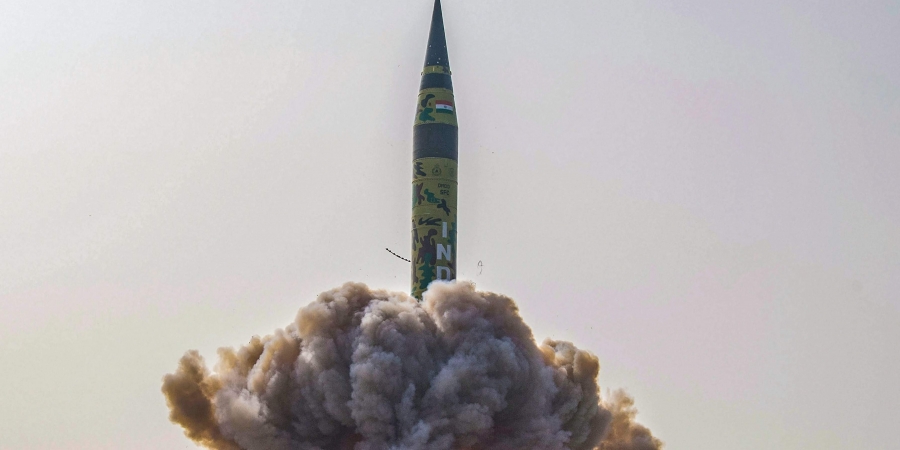India Successfully Test-fires Nuclear-capable Agni-5
BALASORE: India successfully test-fired nuclear-capable ballistic missile Agni-5, which has a strike range of 5,000 km, from Dr Abdul Kalam Island off the Odisha coast, December 10.
This is the seventh trial of the indigenously-developed surface-to-surface missile, defence sources said.
Agni-V is a three-stage missile, 17 metres tall, two metres wide and capable of carrying 1.5 tonnes of nuclear warheads.
Unlike other missiles of the series, Agni-5 is the most advanced in terms of navigation and guidance, warhead and engine, according to officials.
“The missile was launched with the help of a mobile launcher from launch pad-4 of the Integrated Test Range (ITR) at Dr Abdul Kalam Island in the Bay of Bengal on Monday afternoon,” said a defence source.
“It was a user associated trial and Strategic Force Command with DRDO scientist conducted it,” they said.
The missile has been designed to hit the designated target point accurately, guided by the onboard computer with the support of a Ring Laser Gyro-based Inertial Navigation System, the Micro Inertial Navigation System, fully-digital control system and advanced compact avionics, as per DRDO officials.
The first two flights of Agni-5 in 2012 and 2013, respectively, were in open configuration. The third, fourth and fifth launches were from a canister integrated with a mobile launcher, in its deliverable configuration to enable launch of the missile with a very short preparation time as compared to an open launch.
The sixth trial was in June during which the missile was fired from a mobile launcher. Several new technologies were successfully tested during the sixth trial. The Agni-5 also has advantages of higher reliability, longer shelf-life, less maintenance and enhanced mobility, according to sources.
India has in its armoury the Agni series – Agni-1 with 700 km range, Agni-2 with a 2,000-km range, Agni-3 and Agni-4 with 2,500 km to more than 3,500-km range and now, Agni-5 with a formidable 5,000 km range.
This article was first published by our partner India Strategic in December 2018.

